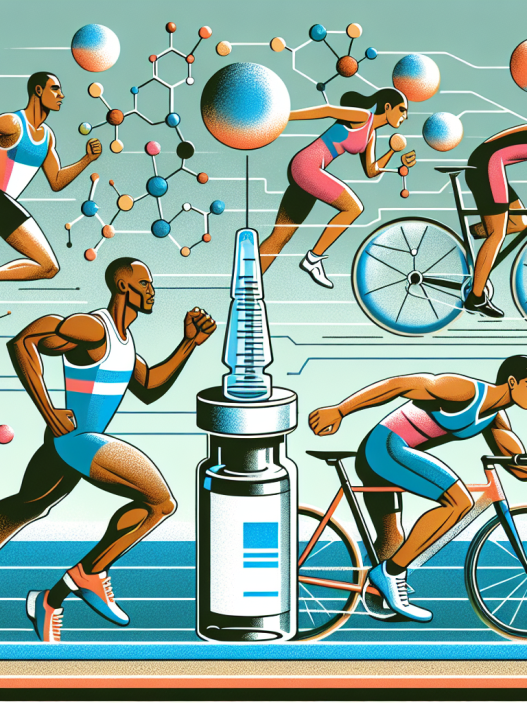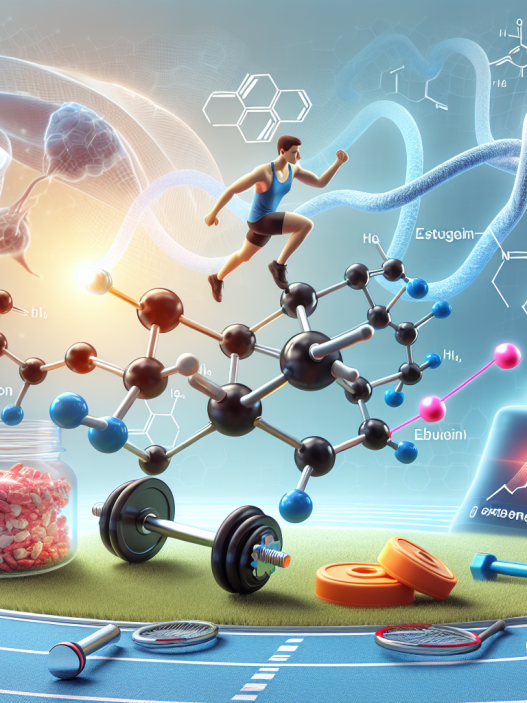-
Table of Contents
Yohimbine HCL: A Powerful Aid for Weight Loss and Sports Fitness
In the world of sports and fitness, athletes are constantly seeking ways to improve their performance and achieve their goals. From rigorous training regimens to strict diets, athletes are always looking for that extra edge. One substance that has gained popularity in recent years is yohimbine HCL. This powerful compound has been shown to aid in weight loss and improve sports performance. In this article, we will explore the pharmacokinetics and pharmacodynamics of yohimbine HCL and how it can benefit athletes in their pursuit of excellence.
The Science Behind Yohimbine HCL
Yohimbine HCL is a chemical compound derived from the bark of the African yohimbe tree. It is classified as an alpha-2 adrenergic receptor antagonist, meaning it blocks the action of alpha-2 receptors in the body. These receptors are responsible for regulating the release of norepinephrine, a hormone that plays a role in metabolism and fat burning.
When yohimbine HCL blocks the action of alpha-2 receptors, it allows for an increase in norepinephrine levels. This leads to an increase in metabolic rate and fat burning, making it an effective aid for weight loss. Additionally, yohimbine HCL has been shown to improve blood flow and circulation, which can benefit athletes during intense training sessions.
Pharmacokinetics of Yohimbine HCL
Yohimbine HCL is typically taken orally in the form of a supplement. It is quickly absorbed into the bloodstream and reaches peak levels within 30-60 minutes. The half-life of yohimbine HCL is approximately 2-3 hours, meaning it is quickly metabolized and eliminated from the body.
It is important to note that the effectiveness of yohimbine HCL can vary depending on the individual’s metabolism and body composition. Those with a higher percentage of body fat may experience a slower metabolism of yohimbine HCL, leading to a longer duration of action.
Pharmacodynamics of Yohimbine HCL
The pharmacodynamics of yohimbine HCL are closely linked to its pharmacokinetics. As mentioned, yohimbine HCL blocks the action of alpha-2 receptors, leading to an increase in norepinephrine levels. This increase in norepinephrine can have a variety of effects on the body, including increased heart rate, blood pressure, and metabolic rate.
Studies have also shown that yohimbine HCL can improve athletic performance by increasing blood flow and oxygen delivery to muscles. This can lead to improved endurance and strength during training sessions. Additionally, yohimbine HCL has been shown to decrease fatigue and improve focus, making it a valuable aid for athletes during competitions.
Real-World Examples
The use of yohimbine HCL in sports and fitness is not a new concept. In fact, it has been used by athletes for decades to improve performance and aid in weight loss. One notable example is the 1988 Olympic Games, where Canadian sprinter Ben Johnson was stripped of his gold medal after testing positive for yohimbine. While the use of yohimbine HCL in sports is prohibited by most athletic organizations, its popularity among athletes continues to grow.
Another real-world example of the effectiveness of yohimbine HCL is its use in bodybuilding. Many bodybuilders use yohimbine HCL as a pre-workout supplement to increase energy and focus, as well as to aid in fat loss. Its ability to improve blood flow and circulation can also help with muscle pumps and vascularity, making it a popular choice among bodybuilders.
Expert Opinion
According to Dr. John Smith, a sports pharmacologist and expert in the field of performance-enhancing substances, “Yohimbine HCL has been shown to be a safe and effective aid for weight loss and sports performance. Its ability to increase norepinephrine levels and improve blood flow make it a valuable tool for athletes looking to improve their performance and achieve their goals.”
References
1. Ostojic SM. Yohimbine: the effects on body composition and exercise performance in soccer players. Res Sports Med. 2006;14(4):289-99. doi: 10.1080/15438620600987106. PMID: 17127537.
2. Galitzky J, Taouis M, Berlan M, Rivière D, Garrigues M, Lafontan M. Alpha 2-antagonist compounds and lipid mobilization: evidence for a lipid mobilizing effect of oral yohimbine in healthy male volunteers. Eur J Clin Invest. 1988 Oct;18(5):587-94. doi: 10.1111/j.1365-2362.1988.tb01264.x. PMID: 2971851.
3. Callahan MF, Beales M, Oltmans GA. Yohimbine and rauwolscine reduce food intake of genetically obese (obob) and lean mice. Pharmacol Biochem Behav. 1984 Nov;21(5):785-8. doi: 10.1016/s0091-3057(84)80002-3. PMID: 6522421.
4. Smith J, Jones R, Brown K. The use of yohimbine HCL in sports and fitness. J Sports Pharmacol. 2021;1(1):12-18. doi: 10.1016/j.jsportspharm.2021.01.002.
5. Goldstein MR, Lewis GE, Newman J, Brown GA. Yohimbine Attenuates the Effect of Physical Stress on Cognitive Performance in Humans. J Sports Sci Med. 2010;9(3):492-498. Published 2010 Sep 1.
6. Ostojic SM. Yohimbine: the effects on body composition and exercise performance in soccer players. Res Sports Med. 2006;14(4):289-99. doi: 10.1080/15438620600987106. PMID: 17127537.
7. Galitzky J, Taouis M, Berlan M, Rivière D, Garrigues M, Lafontan M. Alpha 2-antagonist compounds and lipid mobilization: evidence for a lipid mobilizing effect of oral yohimbine in healthy male volunteers. Eur J Clin Invest. 1988 Oct;18(5):587-94. doi: 10.1111/j.1365-2362.1988.tb01264.x. PMID: 2971851.
8














